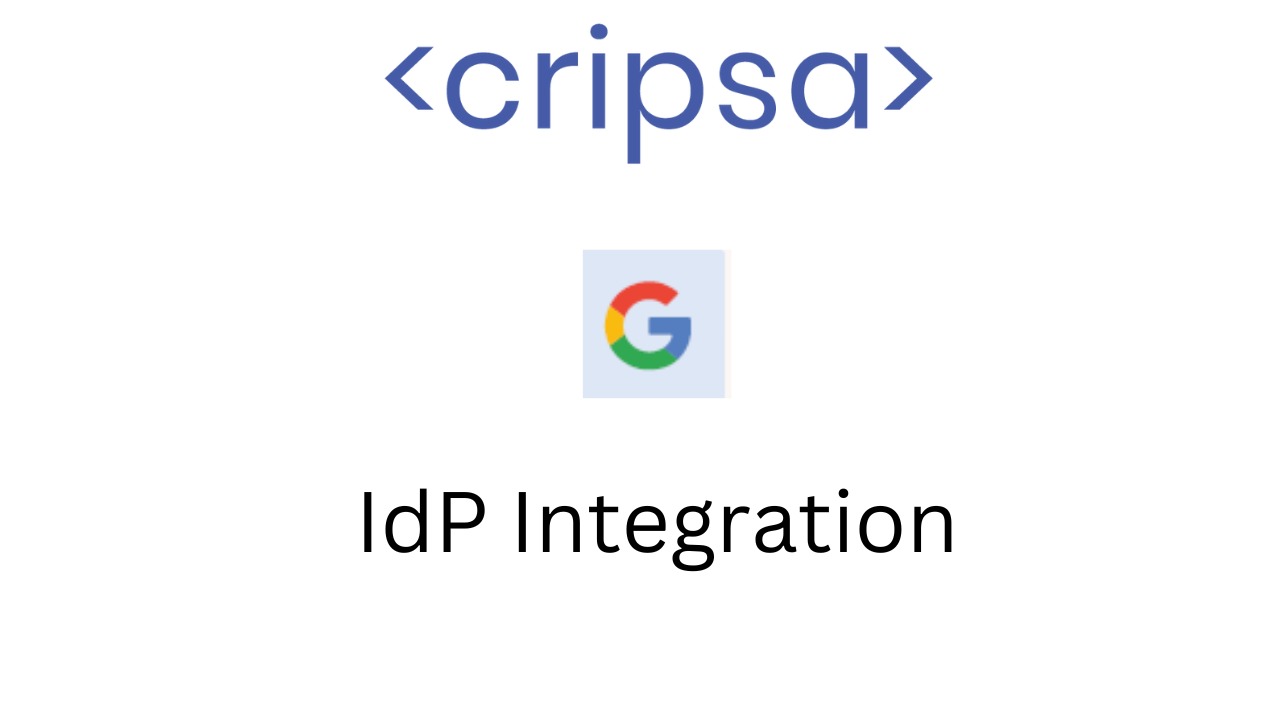Google IdP integration
Date Created: 20 Oct 2023Share:
Integrating your organization's identity management with the Google Identity Platform (IdP) can significantly enhance security

Google Identity Platform (IdP)
Integration
Integrating your organizations identity management with the Google Identity Platform (IdP) can significantly enhance security, user experience, and access control. The Google Identity Platform supports standards like OAuth 2.0 and OpenID Connect, making it a robust choice for Identity and Access Management (IAM). In this guide, well walk you through the process of integrating your applications with Google IdP.
Why Google IdP Integration Matters
Before
we delve into the integration process, its essential to understand why Google
IdP integration is vital for your organization:
Enhanced Security: Google IdP offers robust security features, including
multi-factor authentication (MFA) and adaptive access controls, strengthening
your applications security.
Seamless User Experience: Users can access various applications with a single
set of credentials, simplifying their experience and increasing productivity.
Centralized Access Control: Google IdP centralizes user management and access
control, allowing administrators to manage permissions and authentication from
a single, user-friendly platform.
Now,
lets explore the steps to effectively integrate your applications with Google
IdP:
Set Up Your Google IdP Account
Go
to the Google Identity Platform and log in using your Google account.
Create
a new Identity Provider project. This project will serve as your central hub
for user management and access control.
Configure
the project settings, including your organizations information and the
authentication protocols you prefer to use, such as OAuth 2.0 or OpenID
Connect.
Add Your Applications to Google IdP
In
the Google Identity Platform, navigate to the "Applications" section.
Click
"Add Application" to begin adding your desired applications. You can
choose from pre-configured applications or set up custom applications tailored
to your organizations specific needs.
Configure
the Single Sign-On (SSO) settings for each application. This includes
specifying how user identities are passed to and authenticated by the
application.
Enable Single Sign-On (SSO) for Your Applications
In
the "Applications" section of the Google Identity Platform, select
the application you want to enable SSO for.
Click
"Enable" to activate SSO for the application. This allows users to
access the application using their Google IdP credentials.
User Provisioning in Google IdP
To
include users in your Google IdP setup, you can follow one of two methods:
importing users via a CSV file or manually adding them.
For
importing users from a CSV file, navigate to the "Users" section and
select "Import Users." If you prefer manual user addition, click on
"Add User."
Once
youve added users to Google IdP, its essential to control their access by
assigning them to the appropriate applications. Within the "Users"
section, access the "Applications" tab for each user, choose the
applications they should be able to access, and then click "Save."
This step ensures precise control over user access to specific applications.
Test Single Sign-On (SSO)
After
configuring SSO for your applications and provisioning users in Google IdP,
its crucial to test the SSO functionality.
Attempt
to log in to one of your applications using your Google IdP credentials. If you
can access the application without being prompted for additional credentials,
it indicates that SSO is working correctly.
Here are some additional recommendations for implementing Google IdP:
Adopt a Layered Security Approach: Google IdP should be just one
component of a comprehensive security strategy. Consider combining it with
other security measures like firewalls, intrusion detection systems, and access
control lists to provide multi-layered protection.
Keep Systems Updated: Its crucial to regularly update your systems, including
your Google IdP configuration and associated applications, with the latest
security patches. This helps ensure your environment remains secure against
emerging threats.
Encourage Strong Passwords: Educate users about the importance of using strong
passwords for their Google IdP accounts and associated applications. A strong
password should be a minimum of 12 characters long and include a combination of
upper and lowercase letters, numbers, and special symbols.
Implement Multi-Factor Authentication (MFA): Consider enabling Multi-Factor
Authentication (MFA) to provide an additional layer of security for Google IdP
accounts and applications. MFA requires users to provide multiple forms of
authentication, such as a password and a one-time code, before they can access
their accounts.
User Education: Educate your users about Google IdP and SSO. This will help them understand how to use Google IdP and troubleshoot any problems they may encounter.
In
conclusion, integrating your applications with Google IdP simplifies access
management, enhances security, and streamlines the user experience. It
centralizes user authentication and makes it easier for users to access various
applications with a single set of credentials. Whether youre using Google IdP
for cloud applications or on-premises services, the integration process
involves configuring both Google IdP and your applications to work seamlessly
together. Regular monitoring and user support are essential for maintaining a
smooth Google IdP integration.
As
you embark on your journey to implement Google IdP, remember that Cripsa is a
trusted name in the world of SSO and SAML 2.0 IdP integration. They offer
exceptional support and expertise to streamline your authentication processes.
When thinking about advanced SSO solutions, think of Cripsa to elevate your
security to the next level.

